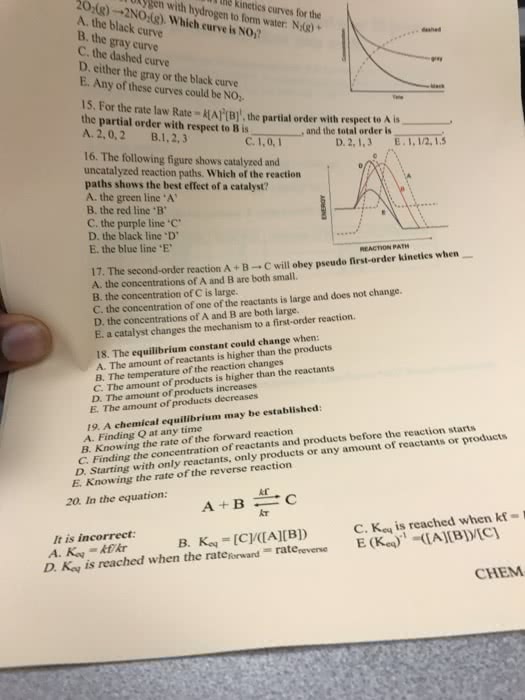CHEM 112 Chapter 14: Section 14.3
Document Summary
Rate law: shows the quantitative relationship between reaction rate and the concentration of species involved in the chemical reaction. Catalyst(c): species that speeds up the rate of a chemical reaction but does not undergo any permanent chemical change aa+bb cc products. Rate laws consist of three main components. The order of the reaction with respect to the reacting species. Rate constant for a reaction is given by the symbol k. Rate law includes the concentrations of reacting species in moles per liter or pressure units. Reaction order: expresses the order of the reaction with respect to each reactant. Shows the effect a reaction species has on the rate of the reaction. Indicated by the exponents x, y, and z in the general rate law given previously. Overall reaction order is the sum of the individual reaction orders rate=k[a]^x[b]^y[c]^z. 14. 3b determining rate law using the method of initial rates.


